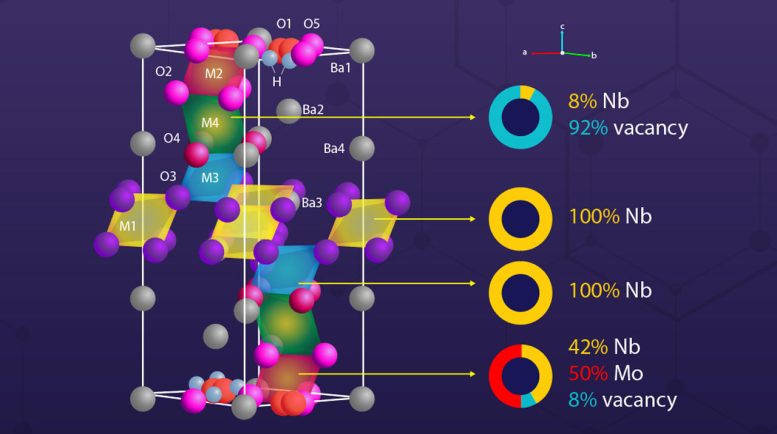
Complete crystal structure of Ba7Nb4MoO20. Credit: Professor Masatomo Yashima of Tokyo Institute of Technology
A novel technique for material analysis combines resonant X-ray diffraction and solid-state nuclear magnetic resonance.
The researchers at Tokyo Tech have uncovered the previously unknown chemical order of Mo and Nb atoms in the disordered compound Ba7Nb4MoO20. This achievement was made possible by utilizing advanced techniques like resonant X-ray diffraction and solid-state nuclear magnetic resonance. The findings of this study highlight the impact that a material’s hidden chemical order can have on its properties, such as ionic conduction. These results are hoped to drive significant advances in the fields of materials science and engineering.
Uncovering the precise structure of a crystalline solid is a difficult task. The properties of materials, including ionic conductivity and chemical stability, are greatly impacted by the chemical (occupational) order and disorder. However, the techniques that scientists typically use to elucidate unknown crystal structures suffer from serious limitations.
For instance, X-ray and neutron diffraction methods are powerful techniques to reveal the atomic positions and arrangement in the crystal lattice. However, they may not be adequate for distinguishing different atomic species with similar X-ray scattering factors and similar neutron scattering lengths.
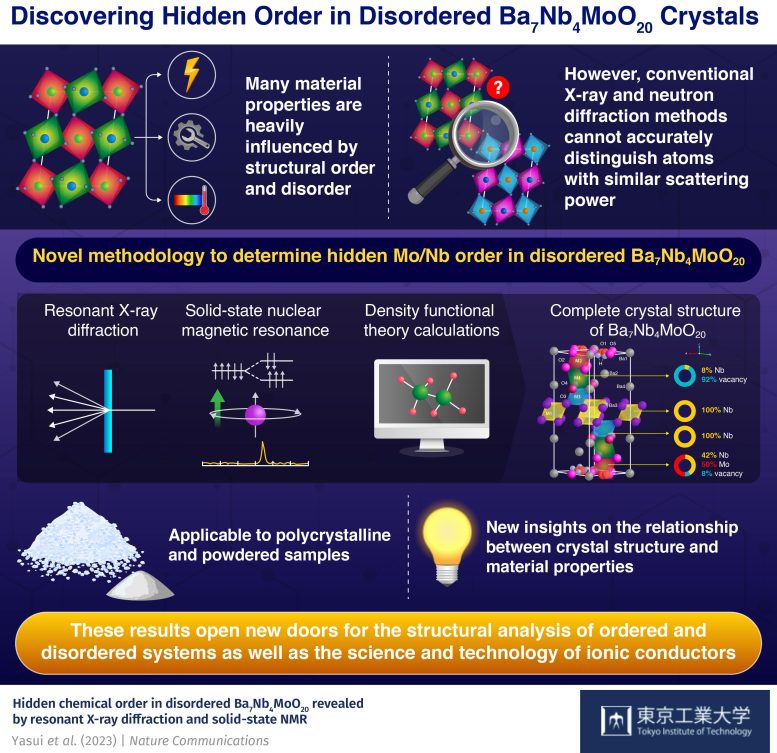
Infographic describing the research. Credit: Professor Masatomo Yashima of Tokyo Institute of Technology
To tackle this issue, a research team led by Professor Masatomo Yashima of the Tokyo Institute of Technology (Tokyo Tech) in Japan sought to develop a novel and more powerful approach to analyze the order and disorder in crystals. They combined four different techniques to analyze the crystal structure of an important ionic conductor, Ba7Nb4MoO20. “We chose Ba7Nb4MoO20 as Ba7Nb4MoO20-based oxides and related compounds are a class of emerging materials with interesting properties such as high ionic conduction and high chemical stability,” explains Prof. Yashima. “However, given that both the Mo6+ and Nb5+ cations have similar scattering powers, all structural analyses of Ba7Nb4MoO20 until now have been performed assuming complete Mo/Nb disorder.”
As described in their recent paper published in Nature Communications, the researchers used an approach that combined two experimental techniques, resonant X-ray diffraction (RXRD) and solid-state nuclear magnetic resonance (NMR) aided by computational calculations based on density functional theory (DFT). The NMR provided direct experimental evidence that the Mo atoms occupy only the crystallographic M2 site in Ba7Nb4MoO20, indicating the chemical order of Mo atoms.
Next, the researchers used RXRD to quantify the occupancy factors of Mo and Nb atoms. They found that the occupancy factor of Mo atoms was 0.5 at the M2 site but zero at all other sites. Interestingly, the M2 site is close to the oxide-ion-conducting, oxygen-deficient layer of Ba7Nb4MoO20. This suggests that the Mo atoms at the M2 site have a key role in the high ion conduction of Ba7Nb4MoO20. Furthermore, DFT calculations indicated that the Mo ordering stabilizes Mo excess composition exhibiting high ionic conductivity. Positions, occupancy, and atomic displacements of protons and oxide ions were also determined by neutron diffraction.
“Our results demonstrate that the Mo order affects the material properties of Ba7Nb4MoO20,” highlights Prof. Yashima. “In this regard, our work represents a major advance in our understanding of the correlation between the crystal structure and the material properties of ionic conductors.” Further, in contrast to single-crystal X-ray and neutron diffraction, the proposed approach can even be extended to other polycrystalline and powdered samples.
Overall, the methodology presented in this study can open up new avenues for an in-depth analysis of chemical order/disorder in materials. In turn, this could lead to the development of physics, chemistry, and materials science and technology.
Only time will tell what other hidden orders and disorders we will stumble upon!
Reference: “Hidden chemical order in disordered Ba7Nb4MoO20 revealed by resonant X-ray diffraction and solid-state NMR” by Yuta Yasui, Masataka Tansho, Kotaro Fujii, Yuichi Sakuda, Atsushi Goto, Shinobu Ohki, Yuuki Mogami, Takahiro Iijima, Shintaro Kobayashi, Shogo Kawaguchi, Keiichi Osaka, Kazutaka Ikeda, Toshiya Otomo, and Masatomo Yashima, 24 April 2023, Nature Communications.
DOI: 10.1038/s41467-023-37802-4


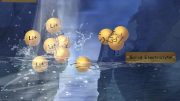
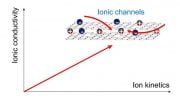
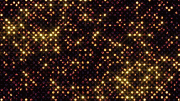



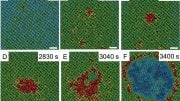
Be the first to comment on "Researchers Discover Hidden Chemical Order in Disordered Compound"